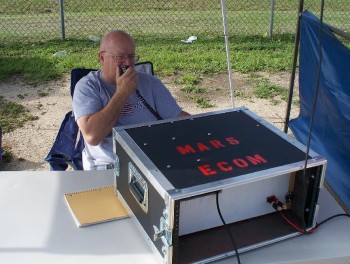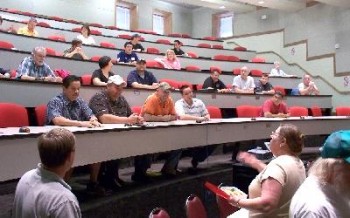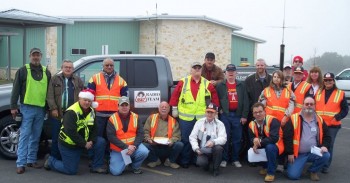Preparation requires each communicator to develop a cache of supplies to help them in fulfilling their communications duties.
There are various websites you can rely on as basic lists in building your “go bag” of supplies. I realize that most of you are on limited budgets regarding the purchase of additional rigs or other related equipment, so improve on what you have with the addition of a better antenna system and upgraded power sources. Keep in mind that you won’t be able to “run home” to get something you’ve forgotten.
There are NO second chances with emergency communications during a hurricane.
Reminders –
Time to test and inspect all your equipment. Replace weak re-chargable batteries and check out all cables for wear or fraying. Make some test transmissions to see how well your equipment will “hit” the various local repeaters that are used during emergencies and put them in your radio’s memory bank. Perhaps it’s time to buy that deep-cycle marine battery as you might need it to power your mobile rig indoors during a power failure. (Don’t forget that emergency VHF antenna system as mentioned above)
Hopefully you are a member of some emergency communications group in your area. Time to attend meetings and on-air lessons in earnest. Ask questions no matter how trivial you think they are because others will probably benefit from the answers. If your group is smart, they’ll have a small drill or two. Keep your group updated on any new gear (radios, antennas, etc) which would make your deployment more valuable to your team.
Keep on your toes when a developing storm starts it’s march across the Atlantic. Follow the path and look at projected paths at: WEATHER UNDERGROUND website. It’s a good source of info during hurricane season.
PREPARE your family for the hurricane season. Train your family members and build a “home bag” so they won’t have to do without should severe weather occur in your area.
Make sure that if a hurricane is within 300 miles of your home that you keep all your vehicles’ gas tanks “topped off” and buy extra, extra batteries for any flashlights used by your family. At the same time, be sure to monitor your EmComm group’s repeater frequency for updates or possible “call outs”. Make sure that you also have “wide-range” repeater frequencies in you rig’s memory. If you have a General or above license, try to have a working, portable HF station which also includes an NVIS antenna system for reliable short-range HF communications.
Keep every battery charged and have all equipment gathered and ready.
Be an active member in your EmComm groups activities so you can all be “on the same page”. Hopefully, your emergency communications group has in place an honest, comprehensive emergency plan for it’s operators and has trained it’s members with something more than “table-top” drills. FIELD DAY IS NOT ENOUGH.


 Just got the heads up from Andrew Watson, president of Alamo Area Radio Organization, that his club has locked in the date of Saturday, April 9, 2011, at Incarnet Word University.
Just got the heads up from Andrew Watson, president of Alamo Area Radio Organization, that his club has locked in the date of Saturday, April 9, 2011, at Incarnet Word University.



